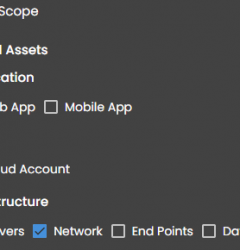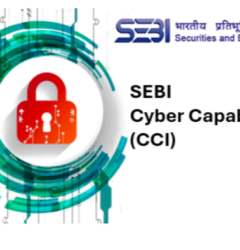
Major cyber threats when you are open sourcing custom applications puts your Company’s reputation at risk and accidentally becoming part of supply chain attacks if it is not secure enough.
Even with best of your intentions in releasing the code any security loopholes may be considered as intentional resulting in bad press to your Organization. (Yes this happens, happened to me! )
Before open sourcing your custom application, taking these security steps is crucial:
Code Auditing and Security Testing:
- Secrets Management: Remove any hardcoded secrets like passwords, API keys, and encryption keys, default credentials from your code. Any mistake of leaving here can be considered as your application is backdoored !
- Code Review: Implement a code review process to identify and fix security issues before deployment. This can involve peer reviews, automated code analysis tools, or both.
- Static code analysis tools: Utilize tools like SAST (Static Application Security Testing) to identify potential vulnerabilities in the codebase without executing it. These tools scan for known patterns and weaknesses.
- Dynamic application security testing (DAST): Perform DAST to simulate real-world attacks and uncover vulnerabilities that static analysis may miss. DAST tools interact with the application directly, mimicking attacker behavior.
- Penetration testing: Consider engaging professional penetration testers to conduct in-depth testing and exploit attempts. This helps identify critical vulnerabilities before attackers do.
- Security Maturity review: Conduct a thorough security maturity review by professionals or yourself (if qualified). This involves examining from standards such as OWASP ASVS or OSS TMM perspective.
Dependency Management:
- Identify and update insecure dependencies: Analyze all libraries and frameworks used within your application. Update any with known vulnerabilities to their latest, secure versions.
- Minimize dependencies: Only include essential dependencies and actively maintain them. Reduce the attack surface by avoiding unnecessary libraries.
Security Documentation and Disclosure:
- Contributing guidelines: Set clear guidelines for code contributions, including security requirements and testing procedures. Ensure contributors understand their responsibilities. Yes Malicious Maintainers is one attack vector
- Security documentation: Create comprehensive documentation outlining security features, known vulnerabilities, and mitigation strategies.
- Vulnerability disclosure policy: Establish a clear policy for reporting and addressing vulnerabilities found by the community. Be transparent and responsive to security issues.
- Reporting Vulnerabilities: Ensure you publish a clear process and channel to report vulnerabilities, patches, exploits to your code. It could be a an email id where researchers can submit their findings.
Additional Considerations:
- License selection: Choose an appropriate open-source license that aligns with your goals and mitigates legal risks. Understand the implications of your chosen license.
- Community support: Be prepared to offer support and address security concerns from the community. Open-source projects require active engagement and ongoing maintenance.
OpenSSF to rescue
The Open Source Security Foundation (OpenSSF) offers various resources and tools that can be valuable before open sourcing your proprietary application. Here are some ways they can help:
Preparation:
- OpenSSF Scorecard: Use the OpenSSF Scorecard to assess your application’s current security posture based on established best practices. This can help you identify areas for improvement before opening your code to the public.
- Guides and Resources: The OpenSSF website offers a wealth of guides and resources on secure coding, infrastructure security, open-source project management, and vulnerability management. These resources can help you implement security best practices throughout your development and deployment process.
- Training and workshops: OpenSSF offers various training programs and workshops on open-source security topics. These can help your team acquire the knowledge and skills necessary to securely manage an open-source project.
Community and support:
- Security champions: The OpenSSF community includes security champions with expertise in various areas of open-source security. You can connect with a champion for guidance and support specific to your needs.
- Mailing lists and forums: Participate in the OpenSSF mailing lists and forums to connect with other developers and security professionals involved in open-source projects. This can be a valuable source of information and peer support.
- Project hosting: While OpenSSF doesn’t directly host projects, they offer guidance and resources for choosing secure hosting platforms for your open-source project.
Additional benefits:
- Credibility and trust: By showing a commitment to secure coding practices and aligning with OpenSSF principles, you can build trust and credibility with your future community and potential contributors.
- Collaboration and innovation: Opensourcing your application can lead to valuable collaboration and innovation from the wider community, benefiting both your project and the overall open-source ecosystem.
Resources:
- OWASP Top 10: https://owasp.org/www-project-top-ten/
- SANS Institute: https://www.sans.org/
- Open Source Security Foundation: https://openssf.org/
Remember, Open sourcing of Custom Applications brings immense benefits but also increases your responsibility to ensure its security. By following these steps, you can significantly minimize the risk of security vulnerabilities and contribute to a secure open-source ecosystem.















Recent Comments